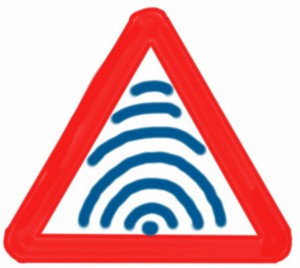The list is not complete. It should just help to avoid the basic mistakes that other developers with no or less RF skills have done before.
- Take care on a reasonable ground plane for the monopole antenna and remember that the size of the ground plane is related to the lowest radio frequency that the M2M device have to transceive
- Remember the tips and tricks you can use to make the ground plane bigger
- Select your embedded antenna carefully and have a closer look on the antenna efficiency special at the lower frequencies that the M2M device has to transmit and to receive (e.g. GSM 850 = 824 MHz or LTE 700 = 698 MHz)
- If you plan to enter non local markets like USA, China, Brazil or China then have a closer look on national regulations and specifications (e.g. RSE, TRP, TIS). Remember that R&TTE is an easy task because it requests no TRP and TIS like the operator approval of AT&T
- Remember that an external stubby helical antenna is most time a monopole antenna with a need for ground plane
- Remember that PCB antennas with coaxial cables are often planned to be mounted at least 20 mm far away from the ground plane and metal layer
- Do not place the ground layer, the supply voltage layer or any other PCB layer underneath the embedded antenna (e.g. chip antenna)
- Do not place traces underneath the antenna
- Do not place the antenna very close to metallic objects (e.g. screws of the enclosure, battery, display, shielding and buttons)
- Do not place the antenna too close to dielectric materials like plastic enclosures, plastic screws, keypads or acrylic glass
- Do not expect to reach the antenna parameter (gain, antenna efficiency, radiation pattern) listed in the data sheet and measured on an evaluation board without spending time and effort on tuning
- Do not tune the embedded antenna in free air and remember that different kind and thickness of plastic will have an effect on the embedded antenna
- Take care that the enclosure is non metal and that the plastic does not contain metal or carbon
- If possible test the selected plastic for high RF losses before field tests and mass production
- Never make a one-to-one copy of an antenna design and expect it to work without testing and tuning
- Do not use too thin PCB tracks or too long PCB tracks to minimize the loss between transceiver and antenna and replace the PCB tracks to a coaxial cables if the distance between antenna and transceiver will be too long
- Remember that the final design is always a compromise and that you often will not reach the same result like tested on reference PCB
- If the RF skills of your own developer team are too low, hire an external consulter
If you have hints and tips that should be listed in the upper list then just drop an email to harald.naumann (at) gsm-modem.de. Any feedback by comment id is welcome as well.
-
Nothing will interfere your embedded antenna?
-
Why the embedded chip or patch antennas are resonant on the wrong – to high – frequency?
-
How will the ground plane effect your embedded antenna?
-
Which radio approvals has your M2M device to pass?
-
How to connect your embedded antenna with your wireless module?
-
How to design an antenna matching circuit?
-
How to switch between an internal and external cellular or GNSS antenna cheap?
-
Which GPS antenna shall be used for a tracking device?
-
Which embedded antenna to select for a Bluetooth / GNSS application?
-
Dos and don’ts during embedded antenna design in
-
Examples for good and bad M2M designs with embedded antennas
- Q&A: Design in of embedded antennas
